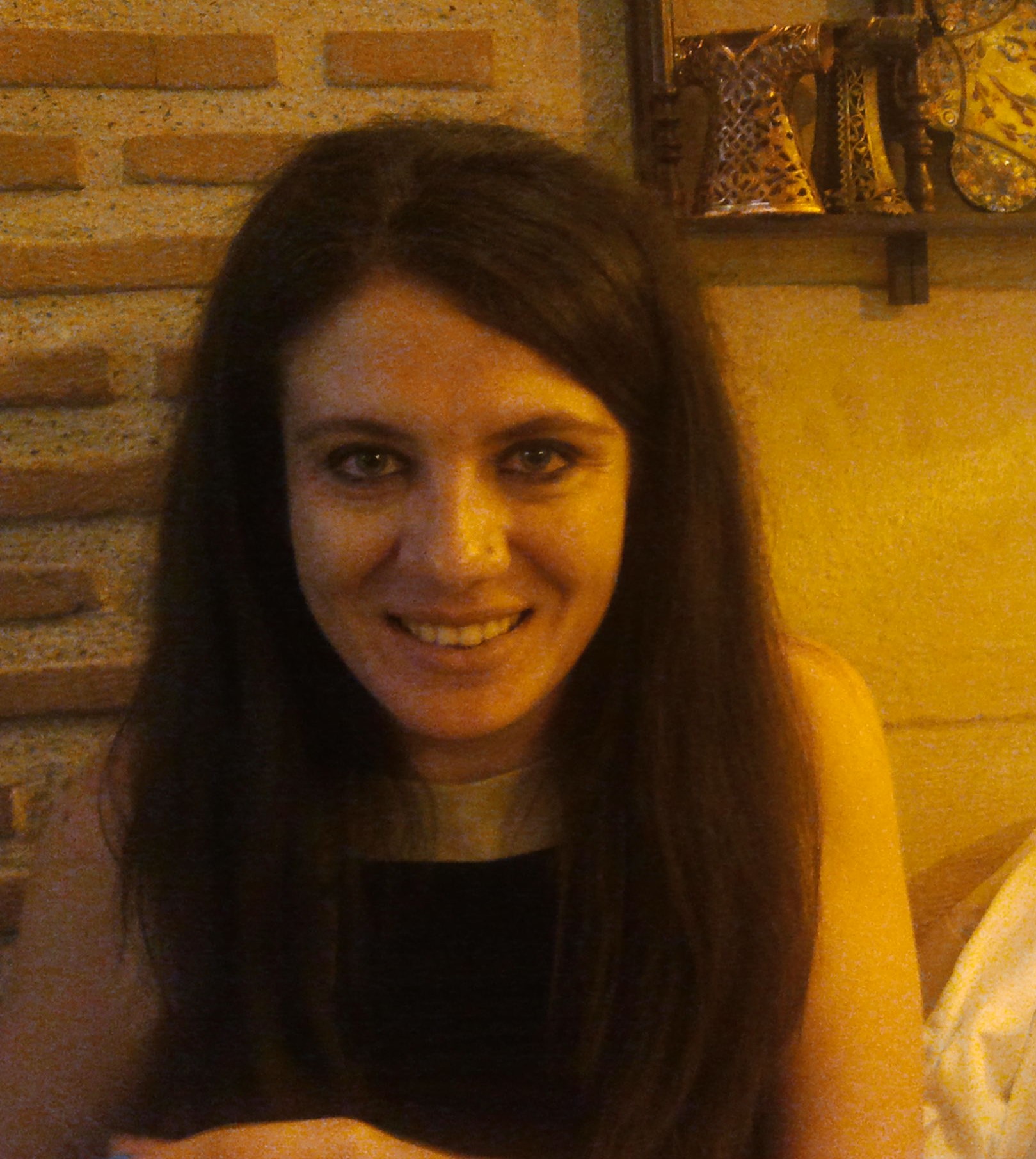
Who’s Who: Nefeli Malamaki
- 8:00AM Jun 27, 2019
- Comments off
EASY-RES is a dream come true for me. When the evaluation results came out, tears of joy filled my eyes. I would work in a job I love in the place I love!
In this weeks Who’s Who – the second part in our series – we talk with Nefeli Malamaki of the Aristotle University of Thessaloniki. Nefeli is an associate of Charis Demoulias, with whom we spoke for our last Who’s Who.
Nefeli, tell us about yourself!
I grew up as an only child in Serres, a small town about one hour away from Thessaloniki, Greece. As a child, I loved to paint and do pottery. However, during middle school maths and science earned my interest. During my senior year in high school, it had become clear that I wanted to be an engineer!
I finished my graduate studies in 2012, during the beginning of the Greek recession. A lot of people – including my closest friends – emigrated to other European countries. After associate professor Charis Demoulias offered me a position of a PhD candidate however, I decided to pursue my PhD here. This was not an easy decision, since the Greek government does not fund PhDs. Some scholarships do exist, but they are not regularly proclaimed and the chances to get one are often poor. However, my beloved parents, Evi and Diamantis, have always supported me during my efforts – no matter their twists and turns.
I had decided to try to change Greece and to fight for it instead of moving to another country, and this is where EASY-RES project came into play. EASY-RES is based on 5 PhD positions, 4 of them supervised by Charis. Charis has not only been a great teacher and our mentor, he also was so supportive for our desire to stay and work in Greece. The ideas which came from these PhDs had been harmonically orchestrated by Charis during the proposal stage reflecting his dream for the Distributed Renewable Energy Sources (DRES) integration into the electrical power system.
What happend then? How did you get involved in EASY-RES and what are your responsibilities within the project?
EASY-RES as a proposal was submitted in two stages, summary and full proposal. Since I was the last bird in the nest continuing my PhD, I helped Charis structure and write the 2nd stage of the proposal. Moreover, when the evaluation results came out, I dealt with the bureaucracy involved during the preparation of the grant agreement. Since EASY-RES was born on 1st March 2018, my responsibilities include both research and administrative issues. During these months I was responsible for the ongoing research for D1.1, D1.2 and D1.3 (for T1.1, T1.2, T1.5), and I participated actively in D2.1 and D2.3 of WP2. Sometimes, I also give some input and comments with respect to WP3 and WP5. Finally, I deal with the internal administrative part of AUTH-EASY-RES team.
How does work package 1 (WP1) contribute to the project?
Traditional power systems are based on uni-directional power flow, meaning from conventional fuel-driven power plants to consumers. However, the dispersion of DRES inside a distribution system often causes reverse power flow, from the DRES to the main grid, leading, in turn, to over-voltages that can cause malfunction of devices and feeders along the distribution system. Active power curtailment had been widely proposed, but it leads to less DRES energy injected, thus, less income for the DRES owners. In the EASY-RES approach the voltage regulation will be achieved through the exchange of reactive power by DRES, which is proven to be effective for even the low-voltage feeders and is adopted by European Standards and many national grid codes in Germany, Austria, Denmark, etc. The standards and grid codes consider the reactive power as a system support function to the distribution systems that cannot be traded. In EASY-RES the participation of the DRES/Battery Energy Storage Systems (BESS) BESS in the voltage regulation process through their reactive power capabilities is considered as an ancillary service that will be traded in respective markets at distribution and at transmission system level. Although the voltage regulation through reactive power has been also studied widely, there still exist several gaps, e.g. the DRES reactive power is not properly defined, quantified and measured, it is usually not prescribed which voltage is being regulated (phase-values, average value of the rms phase voltages), etc. Moreover, since we want to avoid active power curtailment, the DRES power converters have to be oversized with respect to the nominal power of the primary source, something that causes additional investment and operational costs.

Furthermore, the intermittent nature of DRES together with the stochastic switching on/off of the loads cause power volatility at distribution system level. This power volatility is often the reason of the remaining commissioning of large conventional fossil-driven power plants and may result in frequency fluctuations. In weak grids, e.g. Ireland and Puerto Rico, the DRES are required to inject power at a specific ramp-rate. In the EASY-RES approach each DRES is equipped with a supercapacitor to deal with the local volatility and the high components of frequency, while BESS deal with the aggregated power volatility in low frequencies caused also by loads. These BESS are placed centrally at the point of connections of the transmission system with the distribution system and of the medium voltage with low-voltage. EASY-RES aims at controlling the BESS ramp-rate so as to smooth the low-frequencies of the power flowing (actually relatively low active power ramp rates ΔP/Δt) through the distribution grid. The second target is to define the required BESS size parametrically for the required ramp-rate control. In this way, the low-frequency power smoothing can be also considered as an ancillary service and be traded in respective markets.
These two phenomena are categorized with respect to the duration of their control, i.e. the quasi steady-state (>1minute) operation of the distribution grid (ICA). WP1 deals with the voltage regulation problem both in MV and in LV parts of ICA in T1.4 and T1.3 respectively, the proper measurement and quantification of reactive power in T1.1 and the specifications for the DRES reactive power capability and operational losses in T1.2, while the low-frequency power smoothing control and BESS sizing is studied in T1.5.
What are your greatest successes, which you have achieved within your WP since the project started?
I think that our work package has been the most successful one with respect to scientific publications. Thus far, we have published three journal papers and held one conference. This is because George Kryonidis and I are currently concluding our PhDs in the voltage regulation and reactive power capability topics, which led to the ideas for the papers being already very mature when the EASY-RES project was proposed. However, I think there will be 2-3 additional publications, since those publications will concern future deliverables and we are far ahead of our schedule in some topics!
Hand on heart, what do you enjoy the most about your work?
Since the goal of EASY-RES is to allow very high RES penetration in the grid, we expect that our approach has a great impact on the environment and will contribute to solving the global climate and energy challenges! I enjoy the most that we deal with the future role of the electrical power systems! I also particularly enjoy the fact that I can exchange thoughts and ideas with brilliant engineers from all over Europe every day!
Which private projects or dreams would you like to fulfil?
EASY-RES is a dream come true for me. When the evaluation results came out, tears of joy filled my eyes. I would work in a job I love in the place I love! But my very own project is the completion of my PhD, which originally lead me to EASY-RES.
Finally, which place should everyone have seen in their lives?
I would like to say Greece, but there are plenty of beautiful places around the world! For everyone exists a place that is their roots and which feels like home. That can be a geographic or a spiritual place, when we are surrounded by specific people, or smell specific scents. When we are internally connected to our roots, we learn know ourselves better, we pave our future steps with more confidence and get a deeper understanding of different cultures! As a good first step, I encourage everyone to visit places that calm them.
